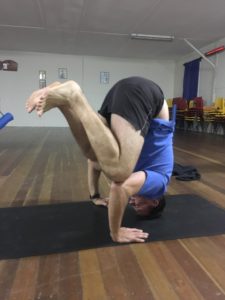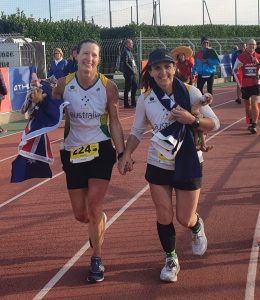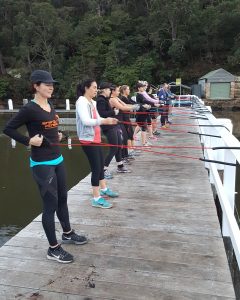Losing Weight in Your 50’s……and Keeping it Off
LOSING WEIGHT AFTER 50……….AND KEEPING IT OFF
When I was posting this article I was looking for some pictures of over 50’s being energetic and all google came up with was people that looked to be in their 70’s and 80’s! When did 50 become old? (apologies mum and dad). I myself am 47 this year, I primarily train people from age 45-55 and none of them look like my kids grandparents! So why do some people think that getting to 50 is old? I know for a fact that there are some SUPER fit people in their 50’s that would run rings around many 20 and 30 years that I know. 50 is not old, its a time in your life that you should embrace your wellness and activity levels. The kids are older, you’re a be freer with your time in many ways (restricted in others for sure) but you should definitely be able to make time in your life to prioritise your health. So instead of searching Google for 50 and active 50 years – I’ll instead use my amazing over 50’s clients! You only need to go to our Facebook page to see many fit and fabulous over 50’s! Click here and see for yourself!
I was asked to write an article on the difficulty of losing weight as you hit your mid 40’s and 50’s. Obviously even my active clients have found that as they have gotten to this stage losing weight isn’t as easy as it used to be, and thats true. It isn’t . Some things have to change as we get older if we want to stay the same size as we were 10 years ago. But the good news is that its really doable. So here is my take on what you can do to lose weight after 50 an keep it off.
For many people, maintaining a healthy weight or losing excess body fat can become harder as the years go by.
Unhealthy habits, a mostly sedentary lifestyle, poor dietary choices, and metabolic changes can all contribute to weight gain after the age of 50
One of the main reasons you’ll have to put in extra effort is that your body composition changes as you age. You lose muscle mass at an average rate of 3-5% for every 10 years after age 35, and this can impact the way you burn fat. Your body goes into its aging stage as it leaves the growing one. When this happens, your body doesn’t need as much energy as it used to.
Also, your resting metabolic rate, ie your body’s ability to burn calories while sleeping or sitting on the lounge doing nothing, decreases by about 1-2% per decade due to muscle mass loss and increased fat mass. Our diets usually don’t change enough to account for this metabolic adjustment, meaning weight can creep up slowly but surely with every birthday.
There are many ways you can get around this, however it does take commitment and a change of lifestyle and eating habits.
Find an Activity that you Love
Finding an exercise routine that you can maintain long term can be difficult. This is why it’s important to engage in activities that you enjoy.
I always advise finding something that is fun and you enjoy – if exercise ends up feeling like a chore it’s very hard to stick to. So if you like group activities, join a group exercise class, running club or sporting team so you can exercise with others on a regular basis. Group exercise has been proven time and time again to help with motivation and long term enjoyment as well as consistency and long term health.
Hormones
It’s wise to get a doctors check up and get your hormones checked. As we age, progesterone, testosterone, and other hormones decline, which sets the body up for storing fat instead of losing weight.
Get the doctor to look at your thyroid, testosterone, adrenal glands, and other hormone levels checked—and then take the appropriate steps to bring them back into balance. This can go a long way toward helping people in their 50’s lose weight.
Choose the Right Supplements
If you feel fatigued and unmotivated, taking the right supplements may help give you the energy you need to reach your goals.
As you grow older, your ability to absorb certain nutrients declines, increasing your risk of deficiencies. For example, research shows that adults over 50 are commonly deficient in folate and B12, two nutrients that are needed for energy production. If you are low on energy, its harder to stay motivated.
Deficiencies in B vitamins like B12 can negatively impact your mood, cause fatigue, and hinder weight loss.
For this reason, it’s a good idea for those over 50 to take a high-quality B-complex vitamin to help decrease the risk of deficiency. (Check with your doctor first)
Set Realistic Goals
Don’t plan to lose 10kilos before you head to Hawaii in a month – it’s not gonna happen and if it does, you are very likely to put it back on two days after stepping off the plane and drinking your first Margarita.
Be honest with yourself. How do you feel? How healthy are you? Have you been slacker than usual and a bit lazy? Is your diet not so great?
Decide what is your healthy weight goal to start with – one that effects things like energy levels, your skin, your clothes, your blood pressure, liver function (all those things that may be affected when you see your doctor for your check up). Then set out to lose it slowly, but consistently through sensible lifestyle changes that you can SUSTAIN for life.
Once you reach this goal, reassess how you feel and then decide if you want to choose another small goal. It may be to lose another few kilos, tone up and get stronger, participate in an event now that you are fitter.
Each goal like this you make is another step towards being and feeling healthier. But they are in small, bite sized pieces that are realistic and achievable. Map it out in a diary like you would a savings plan.
Diet!!!
Overhaul Your Diet. Doh.
Just like the 90’s music you loved isn’t the same as it was when you were in your 30s, (even some songs lose their gloss) your metabolism has changed, too, which means you’re burning about 250 fewer calories each day. So if you continue to eat like you did in the early 2000s, and don’t increase your exercise, you’ll inevitably gain weight.
Eliminating the junk food in your diet and replacing it with loads of fruits, vegetables, whole grains, and lean proteins can make cutting calories relatively painless.
Limiting foods high in added sugar including sweetened beverages, alcohol mixers, lollies, chocolate, cakes, biscuits, ice cream, sweetened yogurts, and sugary cereals, is critical for weight loss at any age
Learn to read a nutritional label!
Look for “added sugars” or search the ingredient list for common sweeteners such as cane sugar, high-fructose corn syrup, and agave. Ideally you want the sugar content to be below 10g per serve.
Below are some samples of Nutritional panels:
a) To look at the sugar content of foods, look at the Carbohydrate (CHO) content. Here, the CHO and sugars are the same (15.9g) so all the CHO in the food item is coming from sugars. Not good!
b) Here there is only 2g CHO but of that only 0.9 comes from sugar. Better, but keep in mind this is a low CHO food.
c) In this example there are 26g CHO but only 1g sugar and 2g fibre – a much better equation to aim for. Note – it’s a vegetable. Hint Hint ???? That leads me to the next point!
Eat More Produce
Vegetables and fruits are packed with nutrients that are vital to your health, and adding them into your diet is a simple, evidence-based way to drop excess weight. Of they are also low in calories and very filling.
Change how and when you eat
It’s not just what you eat, but how you eat that matters in your 50’s. Focus on fullness, not portion control, when you are planning your meals. If your stomach’s not full, you don’t feel full, and you’ll stay hungry. When it comes to healthy weight loss and management, you need to strike that important balance between eating until we feel full and satisfied while still decreasing our overall calorie intake. Increasing the protein and fibre content of meals will help keep you fuller for longer.
There are a few ways that you can limit your overall calorie intake without starving or counting calories – let’s face it – that is a real punish!
Try Intermittent Fasting
Intermittent Fasting is a type of eating pattern in which you only eat during a specified period. The most popular type of intermittent fasting is the 16/8 method, where you eat within an 8-hour window followed by a 16-hour fast.
Numerous studies have shown that intermittent fasting promotes weight loss.
Also, some studies suggest that intermittent fasting may benefit older adults by increasing longevity, slowing cell decline, and preventing age-related changes to mitochondria, the energy-producing parts of your cells by giving your digestive system a break.
Eat Less at Night
Many studies have shown that eating fewer calories at night may help you maintain a healthy body weight and lose excess body fat.
One study of 1,245 people found that over 6 years, those who consumed more calories at dinner were over 2 times more likely to become obese than people who ate more calories earlier in the day.
Plus, those who ate more calories at dinner were significantly more likely to develop metabolic syndrome, a group of conditions including high blood sugar and excess belly fat. Metabolic syndrome increases your risk of heart disease, diabetes, and stroke.
Eating the majority of your calories during breakfast and lunch, while enjoying a lighter dinner, is a worthwhile method to promote weight loss.
Increase Your Protein Intake
Eating a protein-rich diet can help prevent or even reverse muscle loss. Numerous studies have also shown that increasing dietary protein can help you lose weight and keep it off in the long especially when balanced with regular strength training.
How many calories you burn at rest, or your resting metabolic rate (RMR), decreases by 1–2% each decade after you turn 20. This is associated with age-related muscle loss. Another reason why strength training is so important.
Research shows that older adults have higher protein needs than younger adults, making it all the more important to add to your meals and snacks.
Embrace Strength Training
Even if you’ve never picked up a dumbbell in your life, now is the perfect time to learn to love weights. Because the secret to losing weight over 50 is this: Build more muscle mass to increase your metabolism (you’ve got about 20% less now than you did when you were 20). The good news is that this is very achievable. Regular weight sessions can help you regain the ability to lose weight like you were able to 20 years ago. Aim to lift weights at least twice a week, whether you use free weights or machines or do body weight exercises. It doesn’t hurt to lift every day—just make sure to work different muscle groups or train differently each day.
Include High Intensity Workouts
Many people as they age think they need to lower the intensity and take up things like walking rather than trying to exercise a bit harder and get their heart rates up. While I understand that if you have been inactive for a while and you decide to take on a program that leaves you gasping for air and screaming in every muscle group that would be very unappealing, to get the weight loss results you want, you need to be aware that you must at least raise a sweat, huff and puff and incur some discomfort! That’s a reality I’m afraid. The good news is that as you get fitter, the discomfort lessens and the happy hormones that exercise induces start to make you enjoy these sweaty sessions more and more.
To help aid in weight loss you need to elevate your heart rate, consume more oxygen than just walking and talking requires (yes ladies – you know what I mean, “lets ‘walk'” generally can mean lets stroll and chat!), and get a bit out of your comfort zone at least twice a week for a minimum of 30mins a day. Short bursts of high intensity exercise strengths muscles, improves heart health and helps to target belly fat.
If however you are new to HIIT then you can start out walking only, but it needs to be brisk. Then gradually add in hills, and more distance – as long as you are sweating and huffing and puffing you are getting there so that’s a great start. Once your fitness level improves, you can add body weight exercises, maybe light jogging and intervals (think run one telegraph pole, walk one etc). Everyone’s intensity level for HIIT is different so start off doing what suits you, your current fitness level, and work in with any joint pain or other issues you may have. Jumping in and doing too much too soon can lead to injury so be guided by a trainer if you are unsure. Bottom line it needs to feel a bit uncomfortable to have any benefit. Low frequency HIIT ie about every 4 days is great if you are starting out as it gives your body time to recover.
Over 50 and already fit? Go for it. If you are already a regular exerciser you can do any form of HIIT or higher intensity training 3-4 times a week, sometimes more for the ultra fit.
The benefits of high intensity workouts for weight loss are :
- It burns a lot of calories in a short time – great if you are time poor
- It raises your metabolic rate for hours after you have finished, helping you burn more calories at rest
- It helps to lose body fat, especially around the belly. But more importantly it has an impact on visceral fat, the unhealthy and dangerous fat around your organs.
- You are likely to get a gain in lean muscle, which in turn helps to burn more fat at rest by raising your metabolism
- It improves oxygen consumption
- It lowers Blood Pressure and reduces your resting heart rate
- It reduces blood sugar and insulin resistance – very important for warding off Type 2 diabetes
- There are many ways to get your dose of HIIT – from swimming and cycling, to weight training, to running to walking or mix it all up. Just remember the more body parts you use the better!
Sit Less and Move More
Burning more calories than you take in is critical to losing excess body fat. That’s why being more active throughout the day is important when trying to lose weight.
For example, sitting at your job for long periods of time might hinder your weight loss efforts. To counteract this, you can become more active at work by simply getting up from your desk and taking a five-minute walk every hour.
Research shows that tracking your steps using a pedometer or Fitbit can boost weight loss by increasing your activity levels and calorie expenditure. Ideally aim for a minimum of 10,000 steps per day. 12,500 is now the new recommendation, however if you are starting out, start with a realistic step goal based on your current activity levels such as 5000 steps per day. Then gradually work your way up to 7,000–10,000 steps per day or more, depending on your overall health.
Make the Most out of EVERY Workout
If you’re going to put in the effort to block out the time and exercise, squeeze into your sports bra and lycra and get to a class or the gym, don’t get there and waste your time. You can’t just turn up – you need to do the work. Far too many people think that just because they showed up, they’re working out. You need to be focused on what you’re doing and push yourself hard enough to break a sweat or at least complete the full range of motion of a certain exercise. Don’t do things halfheartedly!
Check Your Stress Levels
Between paying for Sally’s dance classes, Johnnies uni fees and running the household and working full time, dealing with your own aging parents, being in your 50’s can be a very stressful period in your life.
Emotional eating and a schedule that seems too jam-packed for regular exercise sessions can take over your good intentions. If you want to succeed you need a solution – full stop.
And what’s the solution? Schedule your workouts like they are doctor’s appointments. You wouldn’t flick that because you were too tired would you?
Exercise is more important than brushing your teeth every day. It gives you far more long term benefits than anything you do in your life.
You need to find that routine that you can stick to and make it NON-NEGOTIABLE. Sure, it may mean an early alarm clock if that’s the only time to fit it in, but that also becomes routine and a good habit. The more you do it the easier it is. That is 100% FACT!
Sticking to a consistent routine can not only help ease stress, it can also help you stay on track with your diet. After all, who wants to ruin the benefits of a tough sweat session by eating a donut?
Get Your Sleep
Not getting enough quality sleep may harm your weight loss efforts. Many studies have shown that not getting enough sleep increases the likelihood of obesity and may hinder weight loss efforts.
For example, a 2 year study of 245 women demonstrated that those who slept 7 hours per night or more were 33% more likely to lose weight than women who slept less than 7 hours per night. Better sleep quality was also associated with weight loss success.
Aim to get the recommended 7–9 hours of sleep per night and improve your sleep quality by minimising light in your bedroom and avoiding using your phone or watching TV before bed. Read a book to relax or listen to relaxation music through your headphones is a dark room. Basically try and POWER DOWN. And do it early, don’t get caught up in the latest Netflix series if its going to keep you awake!
Hunger hormones (leptin and ghrelin) go into overdrive when you don’t get enough sleep which can lead to excessive hunger and poor food choices as you will be looking for that pick me up.
An early night followed by an early morning exercise session will have you ready for bed again the next night. Keep it up long enough and you fall into a great sleep routine and the early starts won’t bother you. If you are a night owl and like to train in the evening, remember that exercise makes it harder to sleep, so unless you have the luxury of a later start, it may be wiser to switch your day around if possible. You know the old saying, “early to bed, early to rise…”.
Focus on Body Composition
Although body weight is a good indicator of health, your body composition ie the percentages of fat and fat-free mass in your body, is important as well.
Muscle mass is an important measure of overall health, especially in older adults. Packing on more muscle and losing excess fat should be your goal.
Train With Friends that have Similar Goals
Research shows that those who attend group fitness or weight loss programs with friends are significantly more likely to maintain weight loss over time. I believe this to be extremely true based on my experience as a personal trainer of over 14 years and training many people in their 50’s – there is just not the fluctuation with huge weight gains then losses and that yo-yo cycle that I see elsewhere. I put that down to the social side of training which in







